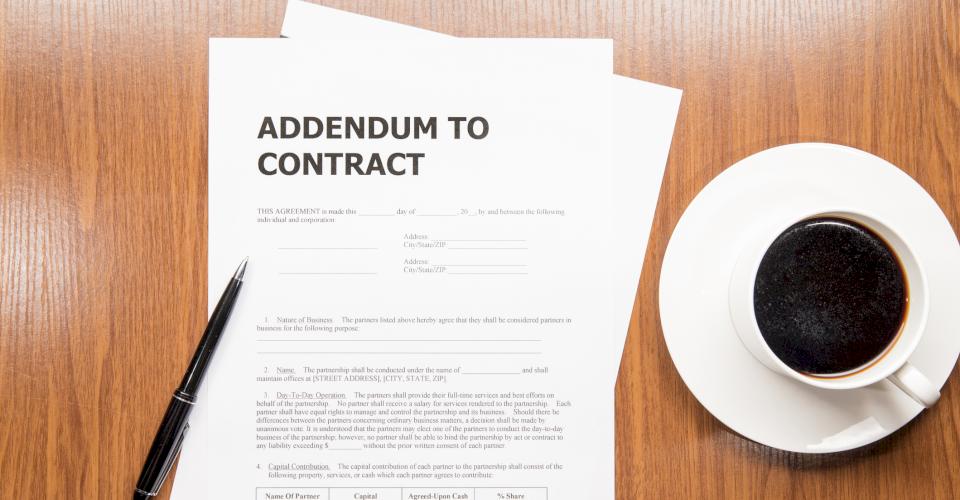How do you go to market? This isn’t a question we get often, but it comes up from time to time. Sometimes we're asked by a vendor we work with who is trying to understand McWane Ductile better. Sometimes a candidate asks the question during an interview or a new sales representative asks while we’re onboarding. Other times we have a hard-working team member at one of our manufacturing facilities trying to understand further what and where the product they make goes and how it gets there. In this blog, we will look at the different bidding processes we encounter on a day-to-day basis that allow us to take Ductile iron pipe to market.
These are some of the most common bidding processes we see daily:
- Direct Bids (Municipalities)
- Public Bids
- Private (Negotiated) Bids
- Design-Build Contracts
Direct Bids (Municipalities)
Direct Bids are bids when Municipalities (Utility Districts, Towns, Cities, etc.) solicit bids for direct material purchases. Sometimes these bids may simply include Ductile iron pipe, or they could also include other items the municipality needs to purchase. The municipality will then buy the material from the low bidder.
They may choose to give the entire bid package to one company that was the overall low bidder, or they may also decide to award the low bids by each line item. The municipality may also consider lead time as a determining factor in who they choose to award a bid to because time could potentially be a more important factor to them, in a certain instance, than the low bid.
Another interesting item to point out when discussing Direct Bids is the time frame of the bid itself. Municipality Direct Bids usually consist of three basic time frame bids:
- One-Time Purchases
- Semi-Annual
- Annual
Bids of this nature could be sent out directly from the municipality to companies they use to purchase from on a regular basis that are local, or they could be sent out via RFQ (Request For Quotation) or RFP (Request For Proposal), which are more broadly advertised. Because these bids are direct to public entities, they are unique, and the results are usually published in a bid tab.
Public Bids
Perhaps the most common bidding process we encounter is what we would refer to as a Public Bid. For these bids, the project owner ─ a municipality ─ will work with their in-house engineering department or use an outside third-party consulting engineer firm to design their project. This type of project will come with a set of plans and specifications where contractors will pay a fee to purchase these bid documents and determine if they will bid on the project. Depending on the complexity of the project, most utilities will pre-qualify bidders to ensure the contractor is qualified and capable of completing the project scope.
The projects themselves will have a Bid Date, where all bids will publicly be opened and read aloud, and an apparent low bid will be announced. A final bid tab will be reported once the engineers on record can verify the project bid numbers are correct as read aloud, and an official bid tab can be issued. Then the engineer, or possibly the contract’s administrator on the project, will recommend to the municipality and/or its Board of Directors to award the bid to “X” contractor. Usually, this will be the contractor who had an overall low bid on the project.
Still, sometimes the project may have additional or deductive alternates that could play a role in who the actual award is recommended to be. Public bid jobs are usually bid in one of two ways:
- Unit Price Contract
- Lump-Sum Contracts
Unit Price Contracts are where the contractor provides a price per unit for a block of work, including materials, labor, overhead, supplies, and profit for each bid item, and then provides a tally of the sum of all unit prices on the bid form.
A Lump Sum Contract is where the contractor provides a total cost for the project instead of breaking items down into units. The Lump-Sum Contract is seen more in Treatment Plant projects and less in water line extensions or transmission/distribution main projects, which tend to favor the Unit Price Contract options. Some common components of Public Bid Jobs that you will see are:
- Invitation to Bid – here, the municipality, or owner, will send the invitation to bid to local newspapers and other forms of media to let the "masses" know the project is out for bid. The Invitation to Bid has some essential information on it for a bidder to know:
- Job Name – the official name of the project
- Bid Date and Location – the date and time of where the bids will be publicly read aloud
- Project Scope – here, you will get a sentence that generally gives a rough scope/size of the project, so the contractor can determine if they would like to look at it further
- Bond Information – the Invitation will also discuss the Performance, Payment, and Bid Security Bonds necessary for the contractor to bid on the project
- Pre-Bid Meetings and Questions – the Invitation will also let you know if the project will have a pre-bid meeting, and if that meeting is mandatory or non-mandatory, and the questioned deadline for the project
- Engineering Information – the engineer information for the project will also be listed on the Invitation
- Bid Forms – Unit Price and Lump-Sum
- Addendums – addendums are issued if questions have been asked on the project that would change how contractors bid the work or if the plans and specifications have been altered on the project
- Official Bid Tabs – are issued once all the numbers are verified and tabulated, and an official award can be recommended
Private (Negotiated) Bids
Private Bids are another common bidding process we routinely deal with, and it varies quite differently than the first two processes we've discussed. Private Bids can take many forms, but most of what we see are commercial and residential developments and are not advertised to the masses.
Often the developer will reach out to a list of contractors who they will ask to prepare a bid on their project and provide them with the plans and specifications on the project. The plans will have been designed by either a municipality's engineering department or a consulting engineering firm, just like a Public Bid job.
Still, they are not administering any phases of the bidding process. The specifications on the project usually will align with the municipality who will eventually take ownership of the pipeline after a said period of time, which is often a year. Contactors who have been asked to price the project will reach out to suppliers who they use to get pricing on these projects.
Design-Build
Design-Build is a project delivery method where the owner selects a project team comprising an architect/engineering firm and a contractor/construction company early in the design stage. This team will collaborate with the owner, under a single contract, to provide both the design and construction services on the specific project. This collaboration occurs as the project is being designed and built to deliver completed projects faster and with lower overall costs.
This is a relatively new project delivery method that has seen a significant rise in popularity over the last 10 to 20 years. As we have seen this project delivery method rise, McWane Ductile has several Design-Build Professionals (DBIA) working for us. If you need to get in touch with any of them, don't hesitate to get in touch with your local McWane Ductile sales representative. For more information on Design/Build, you can check out https://dbia.org/what-is-design-build/.
In Summary
So, as you can see, there are multiple components, nuances, and varying degrees of complexity to the numerous bidding methods that we encounter daily. I hope with this Iron Strong Blog, you have a better understanding of how we take Ductile iron pipe to market. If you have any questions or need assistance with your water and/or wastewater project, please contact your local McWane Ductile Sales Representative.
We have team members who've managed small and large water utility systems, served in engineering consulting firms, and bring decades of experience in solving field issues involving pipeline construction and operation. From design to submittal, to installation, we strive to provide education and assistance to water professionals throughout the water and wastewater industry.














